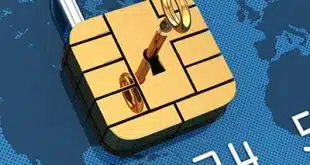Long enchanted with retail and restaurants, acquirers are ready for the next point-of-sale markets.
The independent sales agent and acquirer model is successful because of its ability to competitively sell merchant services. The saturation of point-of-sale and online payment services within the retail and restaurant industries is a prime example of this prowess.
Now, however, that ceaseless sales engine needs new markets to sell to.
In today’s payments arena, especially in new markets with limited or no electronic payments history, that can mean selling much more than a countertop POS terminal. ISOs and acquirers know this. That’s why, when they identify new-market potential, the approach is sophisticated, cognizant of the merchant’s needs and its customers.
Stadiums and entertainment venues have captured a lot of acquirer attention as numerous providers line them up for new POS equipment and software. Fiserv Inc., Shift4 Payments Inc., and Cantaloupe Inc., with its recent Cheq acquisition, are some of the bigger players in stadiums. Others include Block Inc.’s Square presence at SoFi Stadium in Los Angeles and Picklejar Entertainment Group’s event-management services.
Whether it’s stadiums seating thousands or a mobile pet-grooming service, the opportunity to introduce new and updated merchant services can be profitable.
“A merchant segment is prime for disruption by a POS provider if its transactional volume is steady and supported by sustained customer behavior and has new payment needs that are not covered by traditional providers,” says Shahin Jahromi, chief product officer at Aurora Payments. Aurora is a Tempe, Ariz.-based merchant-services company.
Don’t underestimate the importance of that word “sustained.” Consider how cryptocurrency acceptance garnered a lot of attention a few years ago and now isn’t nearly as coveted. “Building a payment platform that accepted cryptocurrencies may seem to have been a great idea two years ago, but has well since diminished in market size and value,” Jahromi says.
“On the contrary,” he continues, “delivery services, health and beauty services, and e-commerce tools for small businesses have enjoyed significant growth in total volume supported by changes in consumer behavior in the past few years. Within these segments, the most profitable ones are those that have small yet specific needs that are not met by the larger players in the market.
“A child-care and pet-care merchant may have a wide range of shared services,” Jahromi adds, “but each has its own specific regulatory and business-model nuances, which may be too complex or costly to cater to. Understanding such nuances is often the key element in assessing the potential of a merchant segment.”
‘Mobile, Mobile, Mobile’
Similarly, transaction volume and ticket size are two key factors to determine the adoption of new POS, says Nilesh Vaidya, global industry head for retail banking and wealth management at Capgemini, a Paris-based advisory firm.
“We have seen high transaction volume and small ticket size spark high adoption due to the convenience factor,” Vaidya says. “The ease of use amongst the POS devices and … other factors also come into consideration. While the form factor of the POS devices certainly influences usage, it is less important than the other variables.”
At Signature Systems Inc., which markets the PDQ POS service, one element of those “other variables” involves evaluating existing POS technology and services within current customers.
“Our biggest vertical is casinos,” says John White, executive vice president and chief technology officer at Warminster, Pa.-based Signature Systems. “Our focus is on the restaurants inside of them.” Tribal casinos are major Signature customers, he says. Ten percent of Oklahoma’s tribal-gaming market uses Signature’s PDQ POS, he says.
“For years and years, there had been two players in that space, Agilsys and Oracle. That technology is old,” White says. Part of the reason for that is the casinos have been slower to adopt the latest technologies and typically can be up to 10 years behind from a technology perspective, White says. That is starting to change, especially as more states allow gambling.
Mobile is at the top of casinos’ wish lists. “What are they looking for?” White asks. “Mobile, mobile, mobile. They don’t have any of that now.”
Two major mobile use cases are for loyalty-program management and order-ahead. The ability to order drinks to a gaming station or room is essential for guests. Signature, which develops its own software to operate on Touch Dynamic devices, offers pay-at-table and mobile ordering in addition to traditional POS technology.
Another trend in these new markets, and as part of an overall shift, is the shift in customer payment preferences, says Jean-Marc Thienpont, managing director of omnichannel & biometric solutions at J.P. Morgan Payments.
“As payment technology continues to evolve, merchants across all sectors are witnessing shifts in client payment preferences. Industries such as sports, entertainment, health care, and automotive services are among those embracing digital payment solutions in addition to retail and hospitality merchants,” Thienpont says.
He adds: “At J.P. Morgan Payments, we’re seeing an increased interest from our clients in these sectors as they are looking to streamline the checkout experience across in-store, online, and mobile channels.”
The broader adoption of cashless payments also can aid efforts to enter new markets. “With more consumers opting for cashless transactions, merchants need to anticipate and adapt to evolving preferences,” he says. “There’s a growing expectation for payment solutions to become nearly invisible by allowing consumers to pay with their palm, face, phone, or smart watch.
“Additionally,” says Thienpont, “merchants are recognizing the seamlessness of digital payments, and are seeking a one-stop shop that can enable this experience for their customers.”
Cash? What’s That?
Some key questions to ask merchants in potential new markets include inquiries about their current POS systems and whether they need upgrading, says Jean Boling, director, ISV business development, at Xplor Technologies, a Creve Coeur, Mo.-based payments provider with more than 106,000 customers.
“Do they have a problem that needs to be solved?” Boling continues. “Do they need to offer faster checkout, pay online, pay by phone, or order-ahead options to their customers? What is their average volume of sales they do per day, along with number of transactions processed per day. What vertical are they in? Another factor to consider is cost. You will be surprised what merchants are willing to spend money on to improve their overall customer experience.”
Another factor when evaluating potential new merchant segments is the changing consumer and her partiality to electronic payments.
“More younger consumers purchasing will aid it,” Boling says. “We will come to a time where everyone will be using cashless payments. Younger demographics will not know what checks are and cash will be something they only keep in the bank. Merchants will lose customers if they cannot give them a way to pay without using cash.”
Payments providers may lose merchants if they can’t provide an inclusive POS system that handles more than payments.
“The latest and strongest [competitive] force in the payment market has been the software providers that embed payment acceptance into POS software solutions that integrate payments into resource and inventory management, payroll, or other business flows,” says Jahromi.
“Merchants in this day and age often find themselves buying POS solutions that solve not only payment acceptance but also how their payables are covering their expenses, such as vendor invoices, staff payroll, or procurement services,” he adds.
The right technology, along with customer service, helps, too, says Boling. “If you can deliver an effective method of taking cashless payments without friction, along with solid customer service and positive consumer experiences, then merchants will see the value,” she says.
“Pricing will play a part,” she continues, “but it will not be the ultimate goal. Merchants want their customers to have a great experience and know that payment transactions can leave a lasting impression on their brand.”



